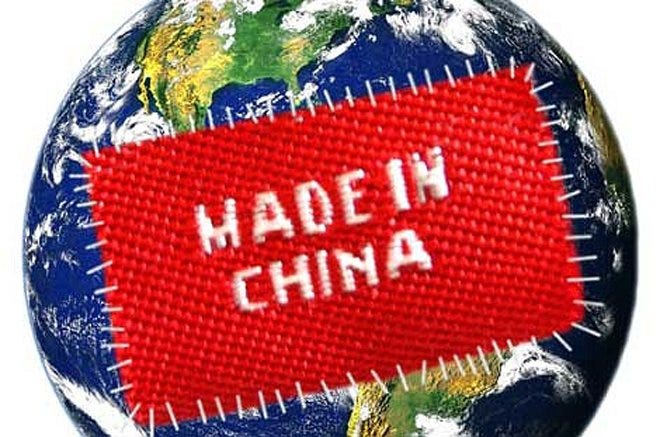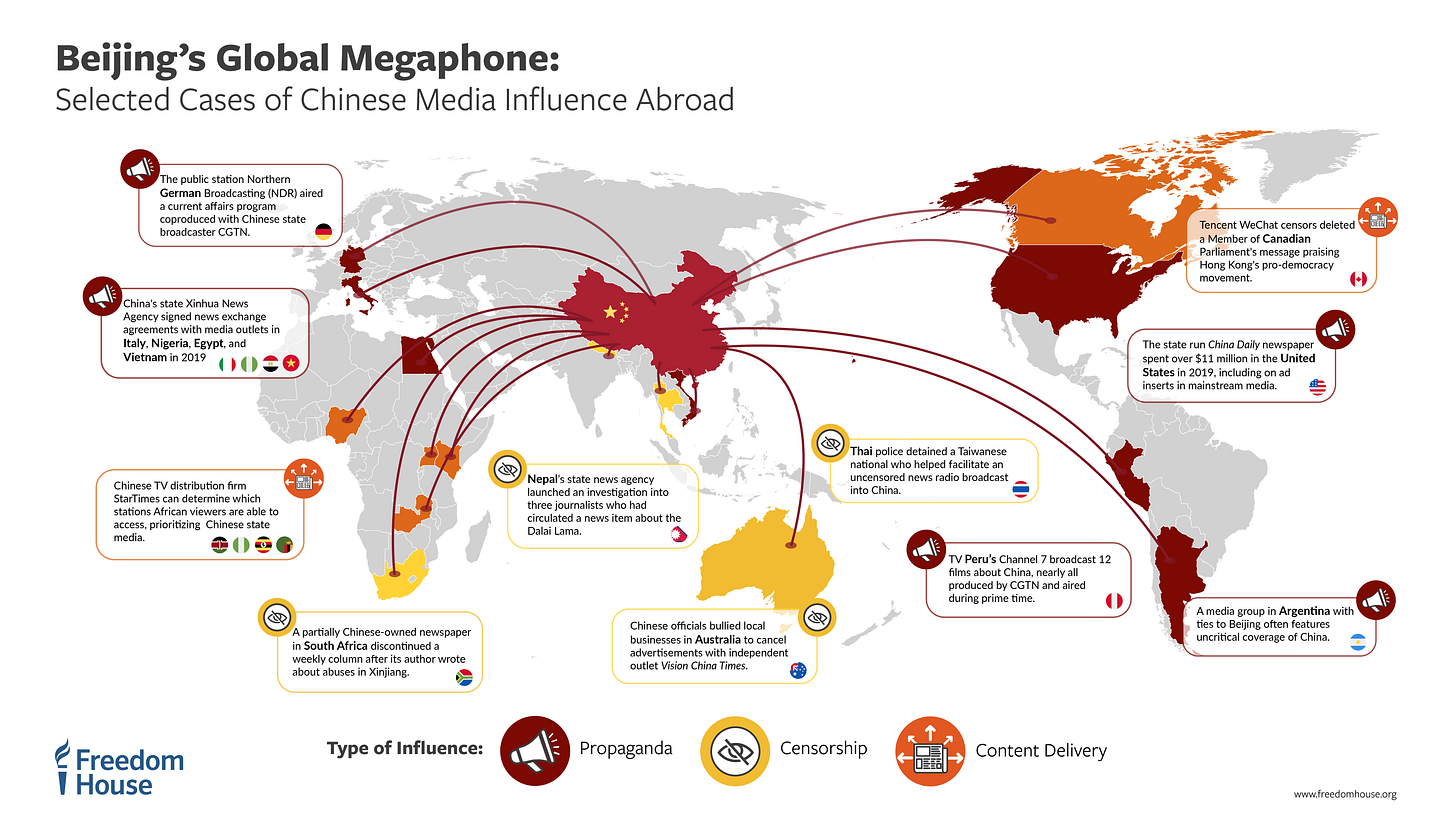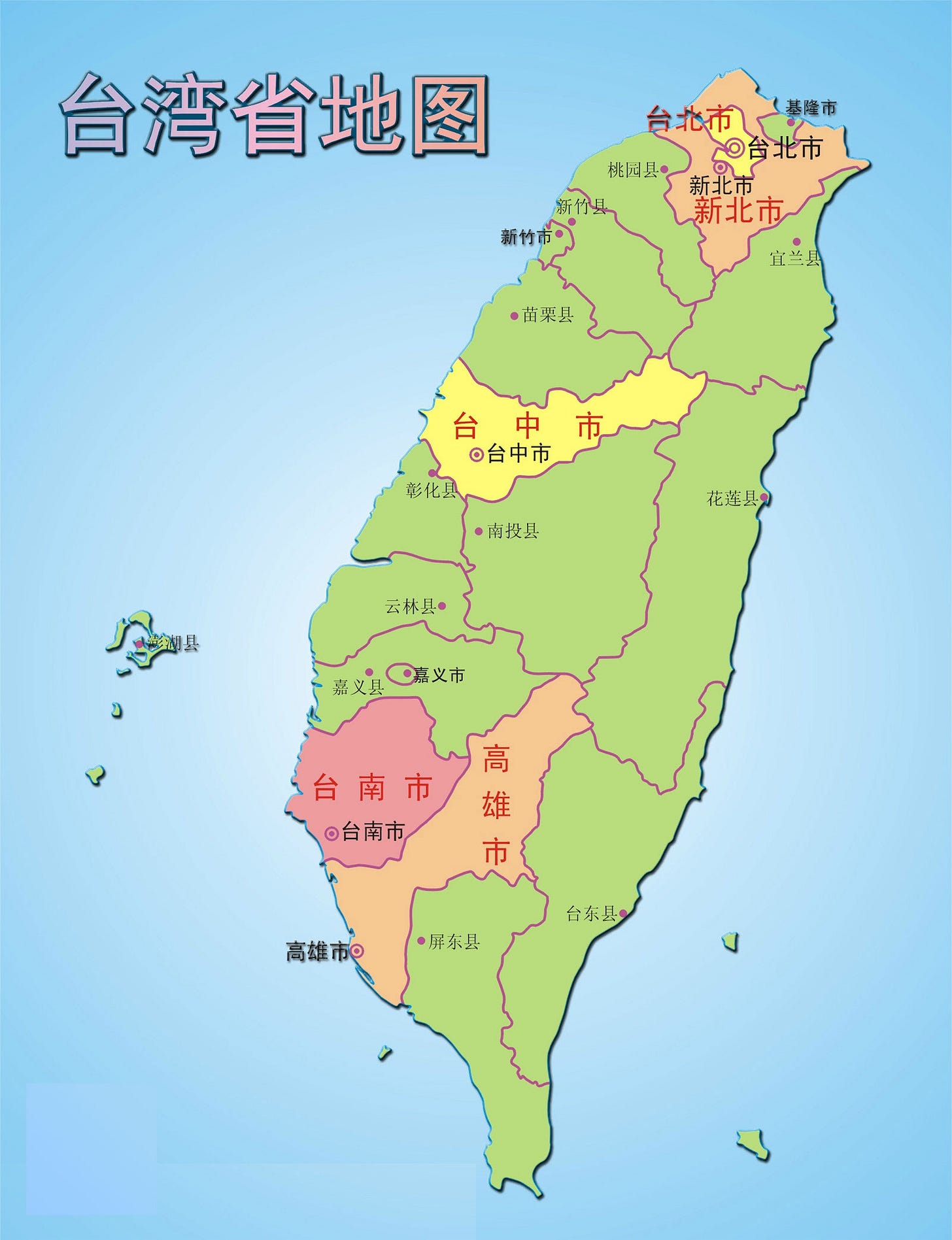Globalization Gave Us Cheap Stuff. Now It’s Giving Us a Geopolitical Meltdown. We Gotta Get that Checked Out.
How globalization, delusion, garbage stuff and a single Taiwanese factory brought the world to the edge of disaster — and what we can do about it.
The Plastic, the Chip, and the Curve
I'll be honest about two things.
First, we’re buried in junk. Plastic junk. Disposable, unfixable, design-by-committee garbage. It’s in the oceans, in our bloodstreams, and in our landfills — artifacts of an economic model that treats permanence as a bug, not a feature. Worse than the mess it leaves behind is the spiritual pollution: the slow erosion of meaning in a world built to be thrown away. We gotta get off this dope.
Second, Taiwan is China. It always has been. This doesn’t mean China has the moral right to roll in tanks. It means we, in the West, have been living in a fantasy, projecting democratic idealism onto an island caught in the most dangerous supply chain bottleneck in human history. Our delusions are less than useless — they’re dangerous. We gotta tidy up our things and get out of these people’s business.
Now, let’s zoom out.
Donald Trump's tariffs are all about Taiwan.
The big idea here is that Tariffs are an attempt by Team Trump to reorder the global economy away from Chinese manufacturing. And beyond the mountains of disposable, deficient, and plastic junk China subsidizes for us, Taiwan and TSMC are at the heart of the system of interconnected and global supply chains that must be changed.
The Recap
After World War II, the world’s winners built a new economic operating system at Bretton Woods. The goal was noble: never again. Countries would trade, not fight. Currencies would stabilize. Development would spread. America would be the arsenal of democracy, the banker of the free world, and the shopper of last resort.
But somewhere between the fall of the Berlin Wall and the rise of Alibaba, that noble system curdled into something else.
America de-industrialized in exchange for cheaper TVs and ten-dollar toasters. “Comparative advantage” became the gospel. China joined the WTO in 2001, and the factory lights dimmed in Detroit and flared to life in Shenzhen. The new world order delivered low prices, ‘free news’ and high margins — until it didn’t.
Trump’s tariffs were crude, messy, and alienating — but they were also the first real signal that someone in the room remembered we had a problem. That trade-offs exist. That the free market, left to its own devices, will sell out the soul of a nation for a penny a unit.
We are overdue for a sober, adult conversation about the hard choices ahead. The world built in 1945 is no longer fit for purpose. We need something new. Something moderate, muscular, and forward-looking. A plan to de-risk globalization without decoupling from the world. A way off the junk — the plastic, the fantasy, the illusion of infinite growth on a finite planet.
Because if we don’t make a move, reality will.
The View from Beijing, and Why It Matters
Let’s start with the map — not the one in your grade school textbook, but the one that hangs in the offices of the Central Committee in Beijing.
From China's point of view, Taiwan isn’t a neighboring democracy. It’s a rebellious province. A runaway son with his own phone line and too many American friends.
This isn’t some recent CCP talking point. It’s a thousand-year story. Through most of recorded history, Taiwan was a barely inhabited island off the southeastern coast of China. It was part of the Qing Dynasty by the late 1600s, formally annexed in 1683. China lost Taiwan in 1895 — to Japan — after being humiliated in the First Sino-Japanese War. That loss wasn’t just territorial. It was spiritual. It marked the beginning of what Chinese history calls the “Century of Humiliation.”
After World War II, Taiwan was returned to China. But in 1949, when the Chinese Civil War ended with Mao’s communists in control of the mainland, the defeated nationalist government fled to Taiwan and set up shop there — calling themselves the legitimate government of all China.
Both sides — the PRC in Beijing and the ROC in Taipei — claimed to be the “real China” for decades. Only one could be recognized diplomatically. The United Nations flipped its allegiance to Beijing in 1971, and since then, nearly every major country has played the same weird game: recognize one China (Beijing) while maintaining unofficial ties with Taiwan. It's diplomatic cosplay — and everyone knows it.
The diplomatic term for all this mess is Chinese Taipei… and it makes no one happy.
The PRC considers Taiwan to be a province — “Taiwan Province” includes the entire Taiwanese main island and the offshore Penghu islands, which was what it originally included when it was returned to China by the Japanese in 1945.
So from Beijing’s view, the West’s obsession with Taiwan's “independence” is like someone breaking into your house, setting up a studio in the attic, and calling it a sovereign state. Delusional. Provocative. Unacceptable.
Now layer on the geopolitics.
China is surrounded by U.S. military bases, aircraft carriers, and allies. Taiwan sits like a cork in the bottle of the South China Sea, blocking China’s easy access to the Pacific. In any serious military conflict, China knows the U.S. would use Taiwan as a forward operating base. This isn’t paranoia — it’s textbook military planning.
Which brings us to Globalization.
All Lines Are Curves
To understand how we got here, we have to revisit three powerful ideas that have shaped the modern economic order:
Comparative advantage is the belief that countries should specialize in what they do best and trade for everything else. It’s elegant in theory. If Canada has timber, and Taiwan has chips, each should stick to its strength, and swap. Everyone wins.
Efficiency is the goal of doing more with less. Eliminate waste. Streamline production. Optimize every step. In business, it’s the holy grail: leaner, cheaper, faster.
Globalization is the logical conclusion of the two: an interconnected world where goods, services, and capital flow freely across borders. The world becomes a single market. Trade wins. Conflict fades.
And for a while, it worked. Prices fell. Innovation accelerated. Markets grew.
But all lines are curves. Push anything far enough and it is possible to have too much… even of a good thing.
This is a concept I’ve obsessed with over the last few years, and tonight Dorothy was reading over my shoulder as she was brushing her teeth for bed and asked me about it so I drew her this graph — Grade three is learning graphs and data distribution! Yay! She was into it.
For a kid, there might be nothing better than chocolate cake. And they can go at it. But there is no infinite good. Not cake, not efficiency, and not globalization. This is law independent of the reason. There will always be something to create a Diminishing Return for more.
In the graph above titled "The Utility of Chocolate Cake vs. Consumption", we demonstrated the non-linear relationship between how much cake a person eats and how much they want more of it:
0 slices – Craving is real. No cake yet. MAX desire.
1 slice – Glorious. Hits the spot. Utility spikes.
2 slices – Still amazing. This is peak cake-life.
3 slices – Okay, getting full but still tasty. Maybe a little jittery.
4 slices – Regret starts creeping in. You’re sweating. The joy’s been replaced by a rising sense of dread and stickiness.
5 slices – Feeling bloated. Your blood sugar is spiking. The utility of more cake drops to zero. You don’t want more cake.
6 slices – Why did I do this? Your temperature soars. Stomach rebellion.
7 slices – Existential crisis. Cake is now the enemy. A mini metabolic hangover. A glucose guilt trip. And your body's response is classic: fatigue, regret, mild nausea, and that philosophical moment where you ask yourself, “Who even am I?”
The line, which she believed was straight to infinity, was revealed, after honest consideration, to be curved.
Efficiency is good — until it eats its own tail.
Too much efficiency can be inefficient— where each additional tweak costs more and produces less, or actively backfires. Push it too far, and it becomes overoptimization: systems are so lean they can't bend, so precise they can’t adapt, and so focused on cost-cutting that they become fragile, joyless, and dumb.
What starts as strength ends in weakness. A perfectly efficient system has no buffer, no creativity, and no room for error. And when the world shifts — as it always does — it snaps instead of flexes.
Like all lines: efficiency, unchecked, becomes a curve. Systems optimized to the brink can’t absorb shocks. One factory fire in Vietnam, one stuck ship in the Suez, and everything grinds to a halt.
Too much comparative advantage,
and you forget how to make things for yourself. Countries lose critical skills. Regions hollow out. The dignity of productive work is replaced by low-wage service jobs and government transfers.
Too much globalization,
and you become dependent on strangers for your survival. Resilience, sovereignty, and memory dissolve in a haze of container ships and cheap credit.
Yes, GDP grows. But dignity, purpose, and strength — the things that make a society resilient — start to vanish.
Which brings us to the chip.
The Chip That Could End the World
Taiwan Semiconductor Manufacturing Company (TSMC) is not just a company. It's a crown jewel of human engineering.
Founded in 1987 by Morris Chang, a Chinese-born, U.S.-trained engineer, TSMC pioneered the "foundry" model: manufacturing chips designed by other companies. It quietly became indispensable. Today, it produces over 90% of the world’s most advanced semiconductors.
These aren’t just any chips. These are the 3-nanometer slivers of silicon that power everything from smartphones to missile guidance systems to artificial intelligence. The brains of modern civilization. Without TSMC, the lights go out on the digital age.
And all of it is made on an island claimed by a superpower that sees reunification as destiny.
The West treats TSMC like a unicorn. China sees it as a hostage. And the global economy holds its breath.
Why Not Just Build Another One?
Good question. We should have. We still can. But it's not easy.
TSMC isn't just a factory. It's a miracle of coordination: deep talent pools, fanatically precise processes, microscopic tolerances, and decades of learning by doing. The equipment is sourced globally, the know-how is embedded in local networks, and the risk tolerance is cultural. You can’t spin that up overnight in Ohio.
But the stakes are too high not to try. Because if we don’t, war becomes more likely, not less. The more irreplaceable TSMC becomes, the greater the temptation to seize it or sabotage it. It is not just a corporate asset. It is now a geopolitical tripwire.
Controlled Deglobalization
We need a new framework. Not nationalism. Not isolationism. But strategic realism.
Call it controlled deglobalization: the deliberate, thoughtful unwinding of certain dependencies without abandoning global cooperation.
This means:
Redundancy in critical systems. Stop treating backup plans as inefficiencies.
Reshoring of essential industries. Chips. Energy. Medicine. Tools.
Allied production networks. Coordinate with like-minded nations to spread risk.
Vocational patriotism. Restore pride in building real things that matter to us. Things that will last, that we can pass down to rising generations.
National purpose beyond growth. Make resilience a goal. Make sovereignty mean something. Remember that without babies, the thing we call a nation will be a very short-lived affair - gone in about 80 years.
This will cost more. It will slow things down. But it will make us whole again.
The free market alone won't do it. The consumer won’t demand it. We can’t buy our way out of this. We must build our way forward. Governments must lead. Not with panic. Not with war drums. But with policy, patience, and pride.
The Plastic and the Chip
So yes, we are too consumerist. Yes, there is too much plastic — in our oceans, in our homes, in our heads. Yes, Taiwan is China, and pretending otherwise is delusional and may cost us dearly.
But the chip is the message. It tells us we have gone too far, optimized too much, and outsourced the very things that make us a modern civilization.
The answer isn’t war. It’s work.
Hard work. Strategic work. Nation-building work.









Wow. A bunch of things:
1) I cannot believe you just threw Taiwan under the bus. It's the same argument Putin used to invade Ukraine. Exactly the same. If Taiwan IS the rebellious son with his own phone line and too many American friends then why do 23 million people have to live by their overbearing helicopter Mom's rules? Why can't they have their own life, make their own choices? They've been doing so for years now and being very successful at it. Taiwan is a vibrant, successful liberal economy with its own wonderful culture and you want to make it sit down, shut up and eat borscht from now on? Really? Remember China is the place famous for bringing back slavery (the Uyghurs) and mowing down protests with machine guns (Tiananmen), not exactly a ringing endorsement.
2) You've forgotten the alternative. Before Breton Woods we had World War. We had Nationalism run amok. We had Mercantilism! After Breton Woods more people were lifted from crushing poverty and starvation than at any other time in human history, by orders of magnitude. You'd have most of us go back to being Daisy on the first episode of Downton Abbey? Stoking fires for the lordlings (billionaires) hours before they even get up for breakfast while the kitchen staff and everyone else just abuses us?
3) If you want REAL change you haven't gone far enough, not by a mile. Eliminate the corporation, rejigger the state itself. By your own logic Canada doesn't make sense. It's a long, short country with language issues. It should be like 3-5 countries if it's going to deal effectively with the geography it has and some of those countries would be best if they included some US states too. Combine the coast of BC with the coasts of Washington, Oregon and California to just below San Fransisco and you've got a dynamic, viable and culturally similar region. But if you include the inner regions of BC, Washington and Oregon you have conflict and problems. They should be part of Alberta, Saskatchewan, some of Manitoba and the states of Idaho, Colorado, Montana and the Dakotas. I mean, if what you're going for is coherence. Ontario would be better off with Illinois, Minnesota, Iowa, Indiana, Michigan and Ohio, possibly parts of Pennsylvania and New York too. A sort of rust belt monster truck of a country. Quebec should be its own thing and parts of Ontario and New Brunswick. The north could be nearly everything 200 miles above the current border with the US and include Alaska. The exception would be Newfoundland and the rest of the Maritimes, which, by name alone, has stubbornly always been it's own thing but might be better off with Maine, New Hampshire, Vermont and Massachusetts (although it might do better combined with New York, Connecticut, Maryland, Rhode Island, New Jersey and parts of Pennsylvania). Anyway, my point is, the national borders as they are bring inherent conflict due to population, language cultures and geography.
Which brings us back to Taiwan. Is war there inevitable? Probably. People are floating 2027 but who knows? Does it make sense? Well, how did you just react to my logical redistribution of Canada and the US? If it does happen it could mean another World War in another era of jingoistic ultra-nationalism with protectionist economic policies (which didn't work well the first two times so....). So isn't the real solution to find a way to build something again with our neighbours? Isn't the real solution to co-operate again? Yeah, we probably do have to let off steam, but can't we use that to power the next revolution in clean social energy? Giving up on Taiwan and turning our backs on them is just throwing more of our friends to the wolves, and those wolves will eat them and come for us next.